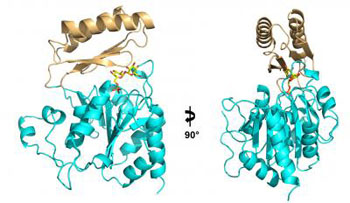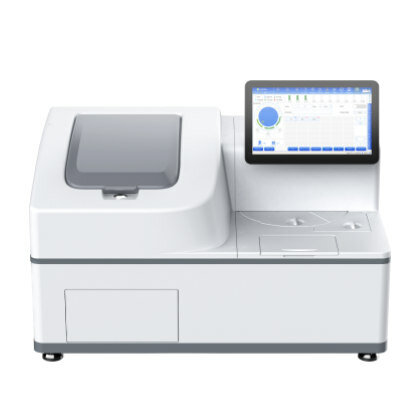Structure of Enzyme for Trehalose Synthesis May Promote Drug Development
By LabMedica International staff writers
Posted on 29 Jun 2016
A team of molecular microbiologists has established the molecular structure of an enzyme required for synthesis of trehalose, a sugar required by several different pathogenic fungi.Posted on 29 Jun 2016
To survive in the human host, pathogenic fungi require the disaccharide trehalose, which is formed by a 1,1-glucoside bond between two alpha-glucose units. Trehalose acts to protect the fungi from the high temperatures they experience while trying to colonize the human organism. The enzymes that synthesize trehalose are not found in humans, and thus serve as potential targets for novel antifungal drugs.

Image: This ribbon diagram shows two views of the structure of the enzyme Tps2 as it removes a phosphate from a sugar molecule (yellow, orange, and red). The result of this process is trehalose, which forms a tough coating on pathogenic fungi, enabling them to make the transition from the ambient temperature of the environment to the much hotter temperature inside a human host (Photo courtesy of Yi Miao, Duke University).
Investigators at Duke University (Durham, NC, USA) used x-ray crystallography to establish multiple structures for one of the trehalose biosynthetic enzymes, trehalose-6-phosphate phosphatase (Tps2), from Candida albicans.
In a paper published in the June 15, 2016, online edition of the journal Proceedings of the [U.S.] National Academy of Sciences the investigators said that these structures and germane in vivo and biochemical studies revealed the significance of the Tps2 N-terminal domain in fungal cellular stress responses and the conformational flexibility of the Tps2 C-terminal domain that imposed exquisite substrate specificity and permitted efficient catalysis.
"We found that the active site of this enzyme is identical in each of these pathogenic fungi, so they all use the same mechanism and have the same residues that are necessary for the production of trehalose," said senior author Dr. Richard G. Brennan, professor of biochemistry at Duke University. "By targeting those active sites, we hope to create a drug with broad-spectrum effect. If you could kill one fungus, you are going to kill them all; at least if you can get the drug inside."
Related Links:
Duke University













